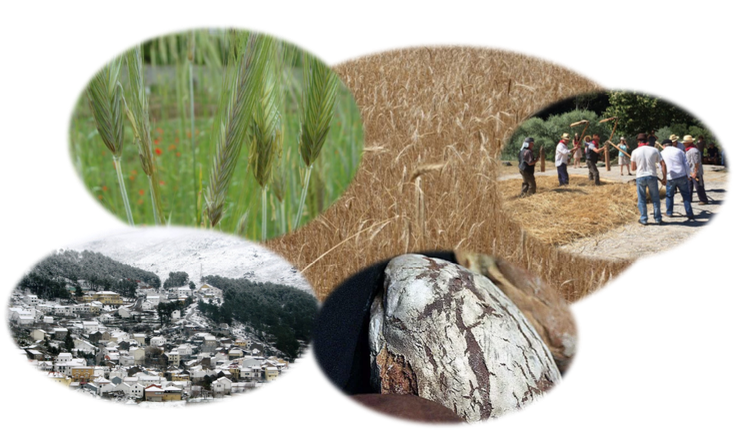Crop: Secale cereale L. (Rye)
is a landrace with populations at different altitudes anda different genetic background. Populations from 700 m of altitude upwards (i.e. from Seia, Aveloso, Mesquintela, Celorico da Beira, Videmonte, Manteigas, Trancoso) are present with a background of wild rye (S. strictum) (Filomena Monteiro et al., 2016). ‘Centeios serranos’ are usually sown in autumn and harvest in July. This landrace's agronomic characteristics remain as an attribute of the species: rusticity and adaptation to less favourable pedoclimatic conditions. This cereal flour gives rise to differentiated breads due to the crop production cycle and the art of making bread.
Cultivation System: Low-input conditions.
Geographical Information
Country: Portugal
The ‘Centeios serranos’ originate from ‘Serra da Estrela’, the biggest mountain range in Portugal, with several valleys along the mountain assortment, in north-eastern Portugal. Such region is characterized by harsh winters and the rye samples are produced between 400–1100 m of altitude. They are cultivated in parts of the ‘Serra da Estrela’ Natural Park, the largest natural conservation area in the country.
Farmer(s) description:
Until today in ‘Serra da Estrela’, local populations make homemade bread and currently, the tourism offices promote this bread along with other different traditional products. The traditional breads thar are made with this landrace include: ‘Pão de Centeio do Sabugueiro’, ‘Pão de Centeio da Guarda’, ‘Pão do Escalhão’ and ‘ Pão de Santoro de Pêga’.
Propagation system: Seed, cross-pollination
Multiplication procedures and consequences on landrace diversity:High levels of heterozygosity and heterogeneity are characteristic of open-pollinating species and, as expected its genetic diversity is higher within than between populations.
Contamination by foreign pollen during multiplication may have changed the genetic identity of rye populations, which emphasizes the need for extended efforts to maintain the genetic integrity of the rye germplasm.
Management plan existence:The landrace management relies completely on farming activities within the area. Currently, no technical or scientific support is given.
Added Values
The rye breads are sold in traditional markets and in rural tourism accommodation.
Others (e.g. commercial/geographical brands or special traits):It is necessary to develop research on the evaluation and valorisation of old and new types of bread.
Due to the high quality of the product, local associations and other public and private agents have an increased perception of the value of this landrace which, together with a renewed interest in agriculture in Portugal, gives hope for its on-farm conservation in the near future.
The access to this resource can be made through local farmers and through requesting the Portuguese genebank (BPGV, INIAV I.P.).
Case study provided by Instituto Nacional de Investigação Agrária e Veterinária (INIAV), Portugal.
ND.
